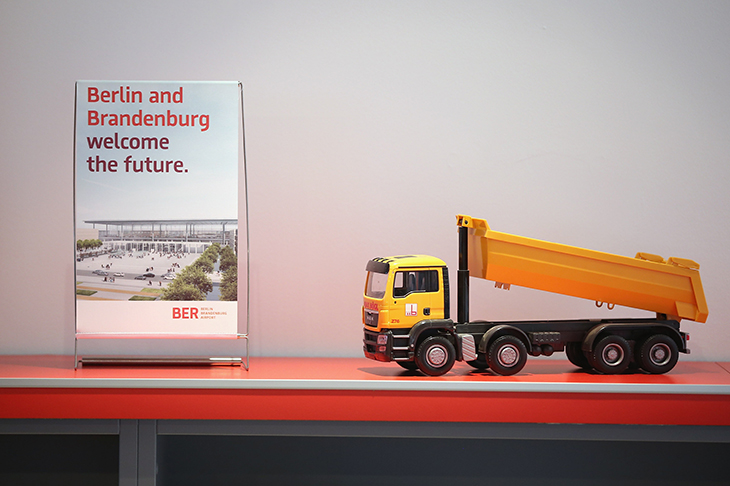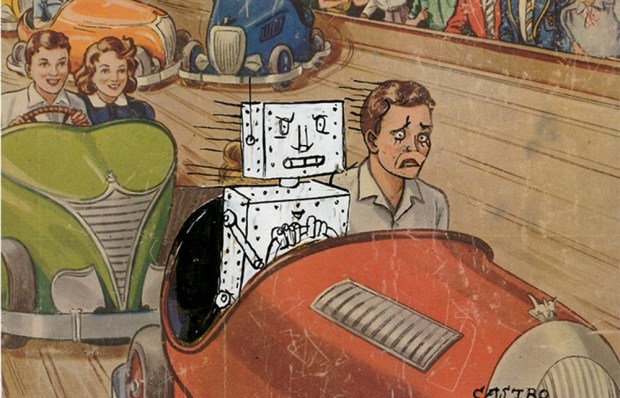In 2012 I finished a meeting in Berlin and headed to Tegel airport. Apparently mine was a historic flight, since the airport was to close that very week. Future flights would soon land at the wondrous new Berlin Brandenburg airport, which would be opening ‘within months’.
Seven years later, planes still fly into Tegel. The new airport may open in 2020 or 2021; no one knows. So far, the project has cost €9 billion, triple the original estimate. The roof is 100 per cent overweight. All the electrical wiring may need replacing. The escalators were too short, so end not at floor level but on an ersatz plinth. Underneath, empty trains run daily into a six-platform ghost station to stop the tracks from rusting.
Even Munich — which works well, cost three times the initial budget and opened six years late — is a triumph compared with the new Hamburg Concert Hall. Costed at £70 million, it opened five years late with a final price-tag of £710 million.
With these facts in mind, next time a bold project such as Crossrail runs 15 per cent over budget and opens a year late, perhaps we could not see it as evidence of innate British incompetence. There is a strain of self–loathing in all our news coverage of public works which implies we are uniquely bad at them. If anything, we are good at infrastructure. It’s the bureaucracy which holds things up.
Modern engineering projects are insanely complicated, and delays or teething problems are to be expected. More damaging by far is the relentlessly negative sentiment spread by the media. When Thameslink added many new routes, many more column inches were devoted to delayed and cancelled trains in the first month than to the enduring benefits these new services would bring.
It is a topsy-turvy world when journalists, whose job involves nothing more complicated than concocting 700 words of faux outrage and then clicking ‘send’, can casually abuse people who build complicated megastructures underground.
My bigger fear is that cynical news coverage makes government far too hesitant to try new things. One of the reasons I like infrastructure spending (HS2 aside) is that it pays off twice over: although the cost is justified using banausic economic measures of work, productivity and GDP, such projects also deliver unmeasured but significant benefits in the quality of everyday life and leisure. If it weren’t for press negativity, we might see still braver investment in more innovative forms of mass transit: the Heathrow Pod, for instance; or aerial micro-trams such as the Beemcar, a re-invention of Wuppertal’s magnificent Schwebebahn.
Certainly, if we want innovation in urban transit, we can’t wait for the US to take the lead. Given what they can achieve in rocketry, their approach to transport is woeful. Moreover, with its fixation on self-driving cars, the tech sector may have bet on the wrong horseless carriage.
Autonomous vehicles are an interesting engineering challenge, but from a wider systems perspective they do nothing to improve urban congestion or uncertain journey times. Instead they will make the problem worse. Think about it. In effect, India already has driverless cars, since the cost of a driver is minor in comparison with the cost of a vehicle. Yet who has ever visited Mumbai and remarked ‘Hey, these guys have really solved the traffic problem!’?
I wrote this article in Austin, the 11th most populous US city. It is 80 miles from San Antonio, the 7th. I thought I’d make a day trip to pay my respects to William DePriest Sutherland, who died at the Alamo. There is one train a day in each direction. It takes three hours and 25 minutes.
I took an Uber to the LBJ Presidential Library instead.
Got something to add? Join the discussion and comment below.
Get 10 issues for just $10
Subscribe to The Spectator Australia today for the next 10 magazine issues, plus full online access, for just $10.
You might disagree with half of it, but you’ll enjoy reading all of it. Try your first month for free, then just $2 a week for the remainder of your first year.















Comments
Don't miss out
Join the conversation with other Spectator Australia readers. Subscribe to leave a comment.
SUBSCRIBEAlready a subscriber? Log in